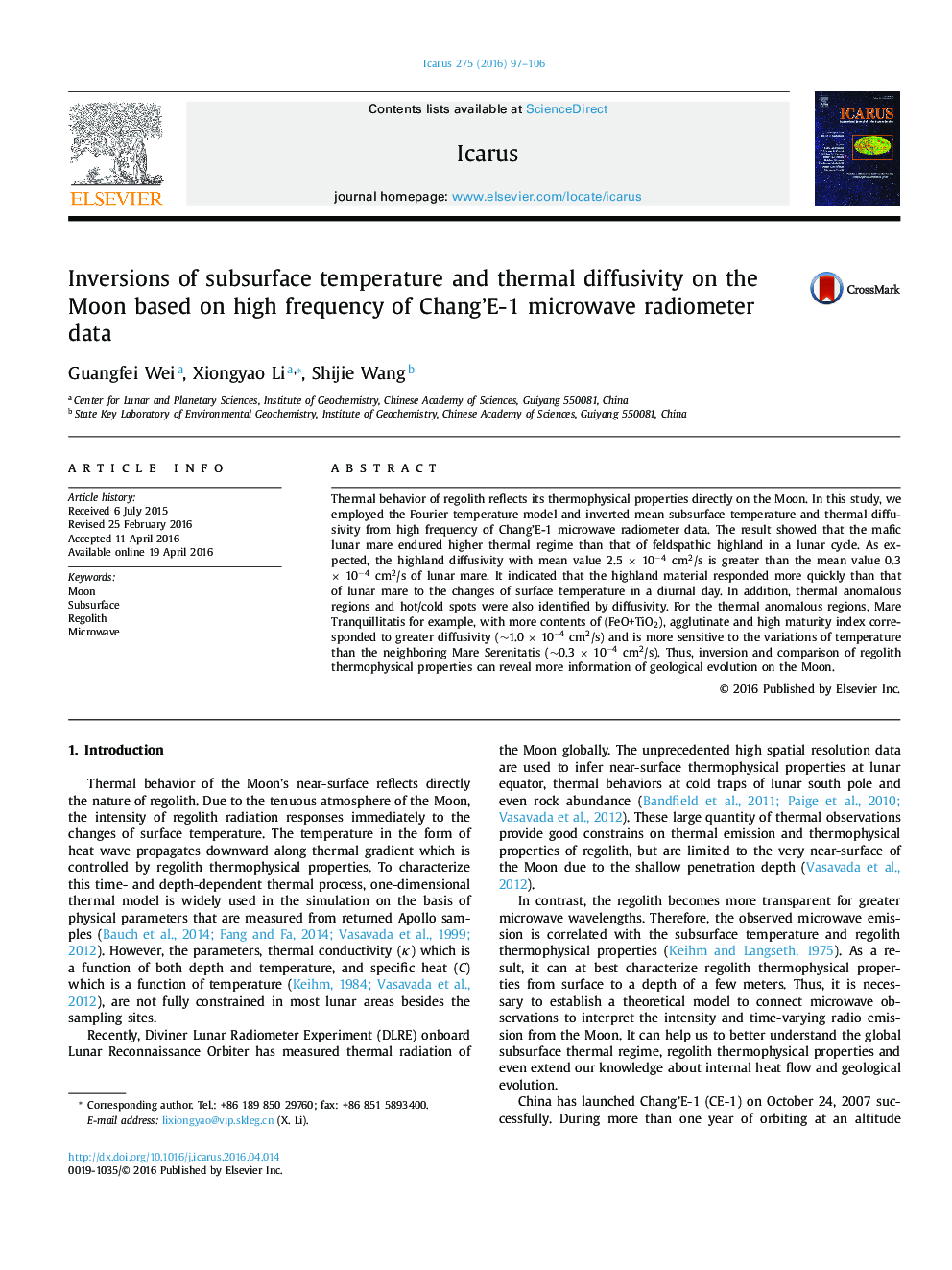| Article ID | Journal | Published Year | Pages | File Type |
|---|---|---|---|---|
| 8134929 | Icarus | 2016 | 10 Pages |
Abstract
Thermal behavior of regolith reflects its thermophysical properties directly on the Moon. In this study, we employed the Fourier temperature model and inverted mean subsurface temperature and thermal diffusivity from high frequency of Chang'E-1 microwave radiometer data. The result showed that the mafic lunar mare endured higher thermal regime than that of feldspathic highland in a lunar cycle. As expected, the highland diffusivity with mean value 2.5 Ã 10â4 cm2/s is greater than the mean value 0.3 Ã 10â4 cm2/s of lunar mare. It indicated that the highland material responded more quickly than that of lunar mare to the changes of surface temperature in a diurnal day. In addition, thermal anomalous regions and hot/cold spots were also identified by diffusivity. For the thermal anomalous regions, Mare Tranquillitatis for example, with more contents of (FeO+TiO2), agglutinate and high maturity index corresponded to greater diffusivity (â¼1.0 Ã 10â4 cm2/s) and is more sensitive to the variations of temperature than the neighboring Mare Serenitatis (â¼0.3 Ã 10â4 cm2/s). Thus, inversion and comparison of regolith thermophysical properties can reveal more information of geological evolution on the Moon.
Keywords
Related Topics
Physical Sciences and Engineering
Earth and Planetary Sciences
Space and Planetary Science
Authors
Guangfei Wei, Xiongyao Li, Shijie Wang,
